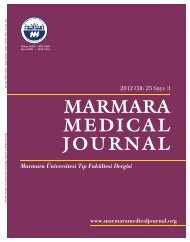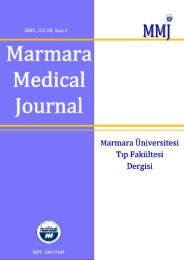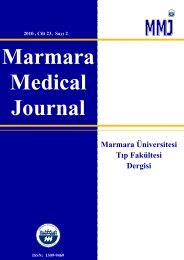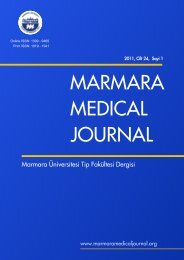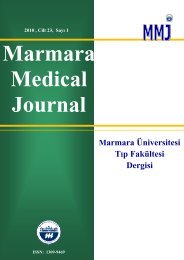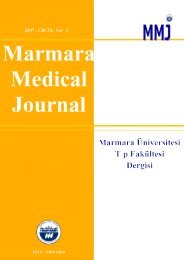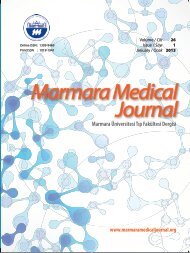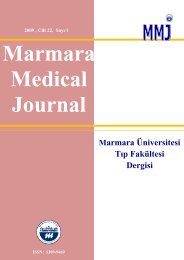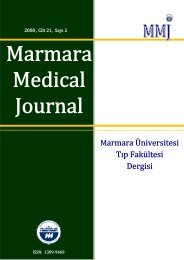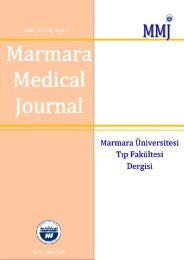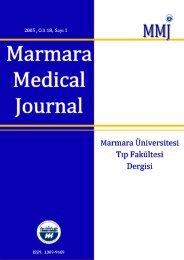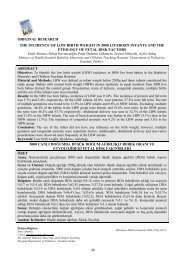Tam Metin PDF (4158 KB) - Marmara Medical Journal
Tam Metin PDF (4158 KB) - Marmara Medical Journal
Tam Metin PDF (4158 KB) - Marmara Medical Journal
- No tags were found...
Create successful ePaper yourself
Turn your PDF publications into a flip-book with our unique Google optimized e-Paper software.
F. AKMAN, et alChloroquine and hydroxychloroquine maculopathyFigure 5. Case 2. Fundoscopic examination showed Bull’s eye maculopathy.DISCUSSIONChloroquine and Hydroxychloroquine arewidely used drugs in the treatment of rheumatoiddiseases, and they might cause serious retinaltoxicity, when used in high doses and taken for along period of time. The most recently publishedguidelines by the American Academy ofOphtalmology (AAO) committee describe twopatient groups: low and high risk patients. The levelof risk for patients receiving antimalarials isdetermined by patient-related factors and theamount and duration of drug usage(Table I) 1 .Patients should have a complete baselineophthalmic examination within the first year oftreatment and not necesseraly before startingtreatment. The first investigation must include retinalexamination through a dilated pupil and testing ofcentral visual field sensitivity by Amsler grid orHumphrey 10-2 testing 1 . If the patient is in a low riskcategory and the examination results are normal, nofurther ophthalmologic testing is needed for the next5 years. For patients in a high risk category annualeye examinations are recommended. Studiesperformed on patients using Chloroquine andHydroxychloroquine revealed that the daily dosesare more important than the cumulative dose 2-4 . Itshould be explained to patients that toxicity isunlikely but not impossible in the first five years ofusage. Although the AAO suggest that color visiontesting be optional, Easterbrook published that it is avery useful test to detect early maculopathy 3 .Easterbrook also recommended Humphrey 10-2visual field testing, only if the best visual acuity isnot 6/6, color vision is disturbed or if the patient issymptomatic 3 .71<strong>Marmara</strong> <strong>Medical</strong> <strong>Journal</strong> 2011; 24 (1):68-72



